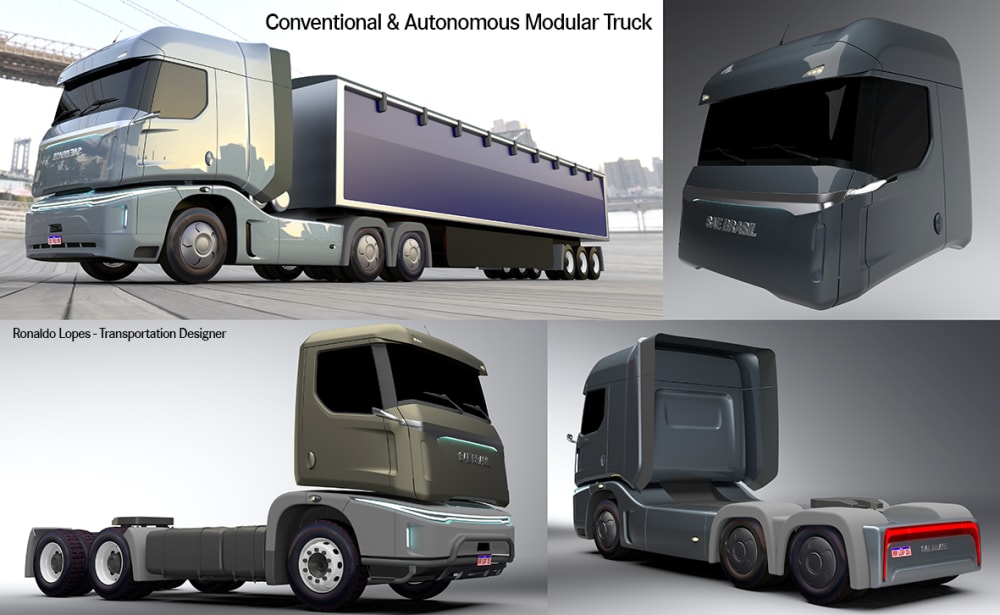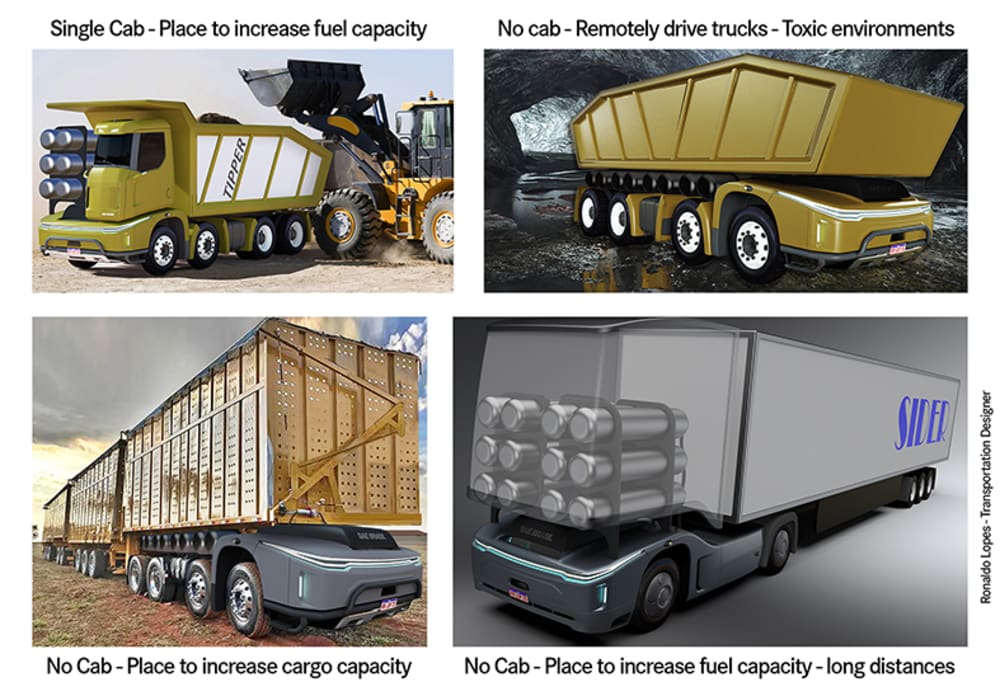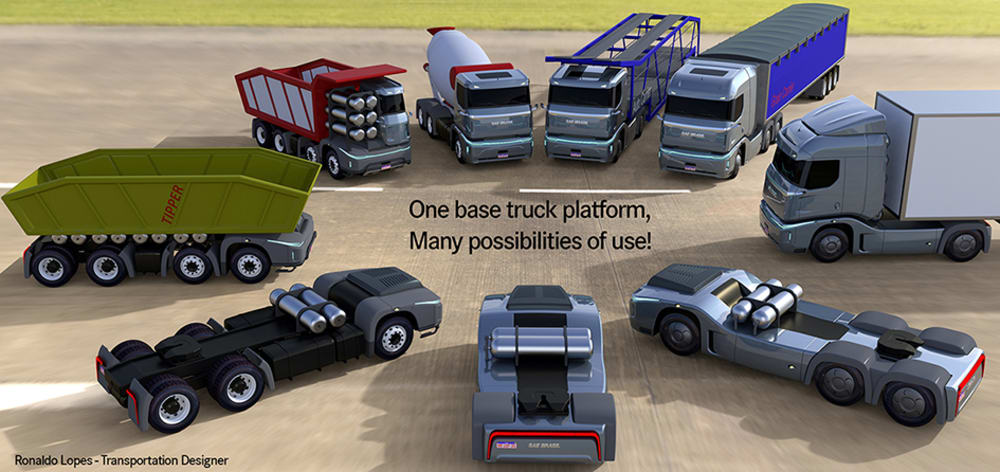We are currently experiencing a time of technological transition in the trucks market. Both the way in which we transport the loads (vehicles driven in person, autonomously or remotely), as well as the energy matrix to be used (vehicles powered by combustion, electricity, hydrogen, etc.).
These questions bring a series of problems for automakers, which are beginning to have problems to plan their product line for the next few years: What technology will be applied in the products and when will society be prepared to adapt to these changes? That is… are we ready to transport cargo autonomously?
The idea is to present a product that meets this transition period... for carriers, fleets and truck automakers.
This product is based in a “truck base platform” – a “powertrain” with all the functions of an autonomous vehicle, where the cab would no longer be needed... OK – so far, no news! This technology has already been introduced and some vehicles are already running “indoor”. But how it will affect the society and industry in the short and medium term?
As we know, society needs, in a way, to “accept” this technology in a broad way and the industry likewise needs to prepare for this new line of products along with the current one - it is not possible to simply stop manufacturing the conventional ones and start produce the autonomous. Both of them will need to be manufactured on the same line... and how does this affect the companies' logistical planning?
We will have 2 impacts during this transition:
- Society - Unemployment for truck drivers;
- Industry - Heavy investments so that its industrial park can produce two types of vehicles – Traditional trucks with cab and Autonomous without cab.
Therefore, as already described, we want to present as proposals, a “truck base platform” of an autonomous powertrain, but which also has available, as an accessory, a fully modular cabin that can be offered to the customer, so that he can choose or not to keep the human figure for the transport of their cargo.
All vehicles are assembled on the same line (autonomous and conventional), where the platform may or not receive a cabin at the end of the line, depending on the customer's needs:
- No cabin (ON Road or OFF Road);
- Narrow modular cabin for driver only;
- Conventional modular cabin for two people;
- Modular cabin with high or low roof;
- Modular dormitory cabin - only for transporting driverless logistics operators over long and medium distances;
- Modular office cabin, etc.
Reasons to keep the cabin in the production series: Truckers that want to be the drivers (those who enjoy driving and traveling ), solidarity/ empathy, tax benefits for fleet owners, special loads that need human monitoring - The cabin at this moment is not only the driver's place, but also a logistics operator's office, dormitory for the personnel that handles the load, etc.
Like this entry?
-
About the Entrant
- Name:Ronaldo Lopes
- Type of entry:individual
- Software used for this entry:Autodesk Alias, Vred and Adobe Photoshop
- Patent status:none








